WiNGSPANTT’s Coldhearted Counterburn deck guide
Contrary to popular belief, Counterburn isn’t a deck archetype you play because you like slinging spells. You don’t play it because you enjoy fire and ice or elemental chaos.
You play Counterburn because you’re an inhuman monster.
You enjoy the feeling of opponents asking your permission to cast every spell. They shudder with fear, slowly coming to resent their own decks. Finally, when they think they have you cornered, your true plan is unveiled, and the first and last bullet points are both “everything dies.”
It is for all these reasons I’ve dubbed my instant-heavy deck Coldhearted Counterburn.
It’s not a deck that runs on autopilot or that has any particular, obvious synergy. It’s full of throwaway spells that, if wasted, will leave the battlefield decisively in your opponent’s hands. You can’t rely on meaty permanents or long-term effects to win. Instead, the entire strategy of Coldhearted Counterburn is to absorb minor threats, deny major ones, sweep up after yourself, and chip away until your victim concedes.
Of course, doing that requires immense calculation. Do you burn the 3/3 creature swinging at you now, or do you wait until end of turn, just in case a post-combat enchantment gets played? Is sweeping the board worth it if it if you know there are no more creatures left in your deck? If an enemy attack will leave you at two life and you have six lands, do you pray for an Overload-enabling topdeck (that might be a shockland), or do you improv with what’s in your hand now? None of these are easy to answer, but you’ll have to make calls like this every turn.
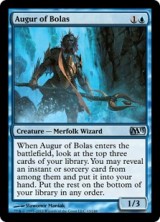 Luckily for you, your opponent is likely to run out of steam after you’ve eliminated the biggest threat or two, if only because he or she will be holding a large number of cards that are completely useless against Coldhearted Counterburn. Removal spells like Dreadbore and Abrupt Decay technically work on your sparse creatures, but using those spells always feels like a bad idea against early drops. Your opponents will (at least in game one) expect a bomb they can kill, which simply won’t come.
Luckily for you, your opponent is likely to run out of steam after you’ve eliminated the biggest threat or two, if only because he or she will be holding a large number of cards that are completely useless against Coldhearted Counterburn. Removal spells like Dreadbore and Abrupt Decay technically work on your sparse creatures, but using those spells always feels like a bad idea against early drops. Your opponents will (at least in game one) expect a bomb they can kill, which simply won’t come.
All their combat tricks are essentially converted to disadvantageous burn, and sweepers like Supreme Verdict have their text boxes translated to “Destroy one creature an opponent controls.” Yes, your adversaries can sideboard, but there simply aren’t a lot of good answers to what you’re playing, since it’s almost all instantaneous.
And if they do take out all their spot removal after the first round, what better time than now to swap in your own planeswalkers or artifacts? Start practicing your maniacal laughter.
After testing this deck against many popular Standard archetypes, I am satisfied with the results. If played carefully and correctly, Coldhearted Counterburn can stabilize against prominent pressure setups and pose serious problems for other reactive control decks. There are perhaps a few cards that I’d still be willing to swap out (primarily for bombs I can’t actually afford), but the backbone of the deck is there.
If you’re willing to calculate, gamble, and learn from your mistakes, this deck will reward you. Just don’t blame me for all the Syncopates you end up wasting a turn early.
Here are a few tips commandments to keep you ahead of the game:
If it won’t cost you the game, let it slide. Trying to squelch everything your opponent does will leave you cardless and unprepared for serious threats. Let smaller things go, reserving your removal for actual game-changers. This will also lull your enemy into a false sense of security.
Don’t aim for the face until it’s lethal. This isn’t Red Deck Wins; your burn exists primarily for threat removal, not post-combat damage reach. Emptying your hand before it’s strictly necessary is a sign of weakness to an enemy trying to find an opening.
If you can burn it, don’t counter it. A lot of players’ first instinct is to respond to scary creatures with an immediate counter. They’ll typically find themselves in the midgame holding tons of fire, but nothing to stave off noncreature spells.
If you think you used a card too early, you did. In most instances, patience pays off. Yes, there will be certain effects that must be addressed immediately, but for the most part, you can undo errors later on, provided you have a life buffer.
Have a plan. Failing that, look like you have one. Once your opponent understands what you’re playing, they’re likely to try to sneak things around you and force you to respond to non-lethal threats. Play conservatively and do not lose your cool.
WiNGSPANTT’s Coldhearted Counterburn (Standard)
- 4 Augur of Bolas
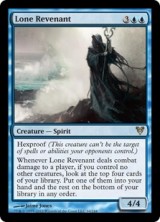
- 4 Delver of Secrets
- 2 Lone Revenant
- 3 Cyclonic Rift
- 4 Izzet Charm
- 3 Magmaquake
- 3 Rewind
- 4 Searing Spear
- 4 Syncopate
- 3 Think Twice or 3 Forbidden Alchemy
- 3 Thunderous Wrath
- 2 Desolate Lighthouse
- 3 Evolving Wilds
- 4 Steam Vents
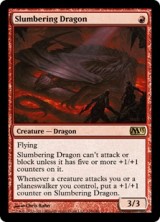
- 4 Sulfur Falls
- 4 Mountain
- 6 Island or 5 Island, 1 Swamp (with Forbidden Alchemy)
Sideboard
Card-by-card anlysis
Augur of Bolas
One of the first cards locked into the deck was Augur of Bolas. As a defensive, disposable creature, he is excellent. A 1/3 body for two mana means he can hold off a variety of zombies, Ash Zealots, and soldiers all day, which is important due to their prevalence in the standard meta. His ETB ability, of course, provides instant card advantage, as well as spell digging and selection.
Dropping Augur on turn 2 often means you can hold off your opponent’s offense while finding an answer for their later plays. Finally, Augur is almost never a dead card, and is in fact a welcome sight late game when his digging ability can find the burn you need to finish the match. Yes, you will occasionally curse Augur when you’re mana-strapped and reveal three lands off the top, but if you objectively observe your draws, you’ll see he helps far more often than he hurts.
Delver of Secrets
It’s true: many players loathe Delver of Secrets. Few creatures are as efficient and (yes, I’ll say it) unfair, not to mention affordable (both in mana and dollars). Since my instant-heavy deck is practically begging for this card, I’d be remiss to exclude it. The only time Delver doesn’t pay off is when you must choose between playing him turn 1 or setting up a more solid mana base first. Whatever you choose, the benefit of having such a nasty beatstick out anywhere in your first three turns more than outweighs the costs.
Lone Revenant
Throughout this deck’s development, I oscillated between win conditions. For a long time I relied on purely burn, but also considered card advantage machines like Staff of Nin, various planeswalkers, and Niv-Mizzet, Dracogenius. The problem with these cards were both their cost and the tempo lost if they were removed, which was common against various popular decks. These cards also had little synergy with the rest of Coldhearted Counterburn.
After reflecting on the power of Morphling in my 1999 deck, I searched through the list of untargetable creatures in Standard and stumbled upon Lone Revenant. It costs less than many finishers, protects itself with Hexproof, and provides insane card advantage on attack. An initial dig can easily net the countermagic needed to prevent your opponent from playing a blocker, or the burn necessary to melt your foe’s face. And, worst case scenario, it’s a 4/4 blocker that most of your enemy’s army won’t be able to trifle with. In many instances, your adversary will be forced to cast something huge like Mizzium Mortars or Terminus just to clear this one, lonely critter. Perfect.
Cyclonic Rift feels like one of the most underrated instants in Standard right now. At the same price as Disperse, it offers 90% of the utility. It can easily ruin your aggressor’s tempo game, as well as stave off Rancors, destroy tokens, and reset planeswalker loyalty counters.
The Overload option is, of course, powerful, though the spell’s primary mode is useful enough to stand on its own. That said, you can expect your enemy to cry like a baby when you vaporize the tokens, counters, and offense they thought they could swing at you.
Izzet Charm
In many ways, the incredible versatility of Izzet Charm makes it one of the hardest cards to play correctly in this deck. If you don’t have any other counters in hand, do you chuck this to stop a reanimation? In the early game, do you spend a Charm to kill an attacker, or wait till the second main phase, hoping to counter a spell that might not even be played? Often you’ll realize what the correct answer was right after making a terrible mistake. But regardless of the difficult questions raised, few cards will be as frequently useful as this one.
Magmaquake
Look, I’m not shelling out the money for Bonfires, so this will have to do. Hell, the speed alone makes it better than Bonfire in some ways, namely leaving mana open for a surprise Rewind before unleashing a torrent of smoldering lava that wipes the board clean.
Several players suggested Mizzium Mortars over Magmaquake to me, but Magmaquake has the advantage of instant speed and planeswalker-hating hilarity. It’s also significantly faster than Mortars, since you can cast it as a ground-only Electrickery as early as turn 3. Best of all, nobody is ever prepared for this card, since it’s almost universally ignored. As you hand it to your opponent to read upon first casting, watch his smug little smile fade away as realization and panic overtake him. It’s delicious.
Rewind
Any blue spell from Urza’s Saga deserves your attention, and Rewind is no exception. Its printing in M13 was a huge stroke of genius luck for counterburn, since one of the archetype’s biggest weaknesses is, ironically, instants. Opponents will often try to force your hand by playing burn or charms at the end of your turn, trying to lure out your counters so you can’t respond to what comes next.
Rewind solves that problem and also gives you the flexibility to untap whichever lands you want, opening up extra mountains if you need to invoke some pyromancy or clearing your Desolate Lighthouse and enough mana to activate it. Rewind is also instrumental as a hard counter with more flexibility than something like Negate. Do note that if Rewind is countered or another spell is played while it’s on the stack, you’ll be left helplessly tapped out.
Searing Spear
It’s no lightning bolt or Incinerate, but instant, splashable, three damage burn is still a powerful tool. Early game, you’ll most often be using Spear to remove threats, but it’s important to hold out for as long as possible before firing off removal in this manner. Letting a few attackers through will keep your precious first lands open to counter stuff burn can’t handle. Once you’ve survived into the midgame, Spear offers you the option of helping to burn off your enemy’s life points. Just be sure not to do so before your victory is essentially imminent.
Syncopate
The updated, emo version of Power Sink doesn’t choke out your opponent’s mana, but it does exile Thragtusk, zombies, and various Flashback cards, eliminating their long-term recursion. And because it only requires one blue mana, it’s easily playable from turn 2 onwards no matter what lands you’re sitting on. Syncopate loses some value as the game drags on, so if you see a good opportunity to use it early in the match, don’t hesitate to do so. And if you do find yourself sitting on a few Syncopates late game, just remember you can always chuck them to Izzet Charm or Desolate Lighthouse..
Think Twice // Forbidden Alchemy
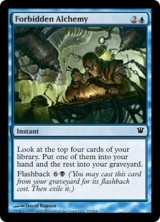 Both options here offer you instant-speed card draw, each with its own pros and cons. Think Twice tends to be more useful early game, helping you hit land drops consistently and putting pressure on your opponent to catch up in card advantage. At three mana, Forbidden Alchemy is more useful late game when casting it as a response to something terrible will almost always find you the answer you need. In other words, Think Twice is better at generating tempo advantage; Forbidden Alchemy is better at fixing problems.
Both options here offer you instant-speed card draw, each with its own pros and cons. Think Twice tends to be more useful early game, helping you hit land drops consistently and putting pressure on your opponent to catch up in card advantage. At three mana, Forbidden Alchemy is more useful late game when casting it as a response to something terrible will almost always find you the answer you need. In other words, Think Twice is better at generating tempo advantage; Forbidden Alchemy is better at fixing problems.
Do note that if you run Forbidden Alchemy, I recommend you also run a single Swamp. By the time you have enough mana for Flashback (at 6B), you will have usually dug out the single copy with card draw or Evolving Wilds.
Thunderous Wrath
While I was initially put off by the huge normal casting cost of this nasty burn spell, the Miracle effect more than makes up for it. Thunderous Wrath provides ample power to take out Tristani, Niv-Mizzet, and a slew of other popular beefcakes. It also kills most planeswalkers dead on sight. So when you cast it off the top of your deck for R, you’ll either get a nice trade or a 25%+ blast to your enemy’s life total. If necessary, it can be hard cast, but if you find yourself holding too many, don’t be afraid to ditch them with looting effects.
Important to note: if you draw Thunderous Wrath (or any Miracle card) during your opponent’s turn (via Think Twice, Desolate Lighthouse, etc.) you can play it for its Miracle cost. Keep that in mind when you’re trying to decide what lands to use to pay for the card drawing effects.
Desolate Lighthouse
Bad players hate “looting” because they feel like they’re losing cards. Instead, effects like Desolate Lighthouse and Izzet Charm should be viewed as tools that help you find the best possible hand out of what’s available near the top of your deck. Once the mid-late game arrives, you can always stow a land or two in hand as chucking material, or simply ditch Think Twice/Forbidden Alchemy with the intent to Flashback later on. The personal value of Lighthouse will go up for each player over time, as he or she intuits the options each card in Coldhearted Counterburn offers.
Evolving Wilds
Diss Evolving Wilds as a newbie mana fixer, but it’s one of the best newbie mana fixers of all times. And because this particular deck has so few turn 1 plays, Evolving Wilds will almost never hinder your land progression.
Destricted pointed out to me that this land’s “thinning” effect (the removal of other lands from your deck, decreasing late game land draws) is miniscule, but every bit helps, especially when you’re using cards like Augur of Bolas and Lone Revenant. Evolving Wilds also provides a second benefit with these cards, since it can shuffle things you involuntarily placed bottom-of-deck back into your reach.
Please note that Evolving Wilds is instrumental in activating Forbidden Alchemy’s Flashback cost, so fetch a Swamp once your basic color requirements (usually RR and UU) are met.
Steam Vents//Sulfur Falls
I know these nonbasics can get expensive, but it’s important to use as many as possible. Your first two turns are absolutely critical, and failure to hit one of each color by turn 3 (and preferably two of each by turn 4) will hurt your ability to respond to the board situation. If your budget can’t fit in either card, do not use Izzet Guildgates instead. Their always-tapped entrance will cost you games. When in doubt, opt for basic lands.
Island/Mountain // Swamp
There’s not much to say other than “use the prettiest lands you’ve got.” The value of these basic lands will depend on how many dual-style options you have, but it’s important to try to leave at least UR mana open whenever possible.
An important suggestion: unless you play Delver of Secrets first turn, you should always play or fetch Mountain first. This way, if you topdeck Thunderous Wrath, you have the option to use it immediately.
The sideboard
Building and testing this deck, I’ve created the sideboard based on walls I’ve hit and opportunities for optimization. That said, no sideboard is perfect; it needs to be customized to your local metagame. If you routinely face control decks, you may wish to permanently swap some of the mainboard options out in favor of long-term card advantage generators. If rush aggro is all the rage at your LGS, you might as well run anti-beats tools right off the bat.
Aggro matchup: Against the fastest decks (zombies, white weenies, etc.) cards like Rewind, Forbidden Alchemy, and Think Twice are too slow to be of any real use. You still need your faster creatures and burn spells, but dropping in Slumbering Dragons and additional firepower will help. A single Slumbering Dragon can frequently deter entire enemy forces, and there’s nothing more hilarious than an opponent waiting for a fatal swing, only to eat a Magmaquake (that leaves your now gigantic dragon unscathed). Pillars of Flame are perfect to exile zombies, and Electrickery is highly efficient versus goblins, spirits, and mana dorks.
Try to save your counters for game-ending non-creature threats, and use Cyclonic Rift to disrupt enemy tempo. Remember your Augurs and Lone Revenants make great blockers, and you can stabilize the board with more cards in hand than your opponent, it’s your game to lose.
Control matchup: Since most popular control decks are creature-light (just look in the mirror if you don’t believe me), you aren’t going to be getting much use out of Magmaquake, so ditch it. If you’re facing a more Azorius style deck, I’d recommend dropping in all your copies of Chandra. She gets on the board before Azorius’ main threats, and can single-handedly shoot down Snapcasters and the like. Her presence alone makes playing other ‘walkers difficult, and if you can land her spell-doubling ability on a Thunderous Wrath, you’ve probably won.
If your opponent is playing a burn-heavy control deck (perhaps something close to Counterburn, or at the very least Grixis), Staff of Nin and a fourth Cyclonic Rift would be better replacements for Magmaquake. Almost no deck is attuned right now to deal with artifacts (at least ones that don’t die to Abrupt Decay), so landing even a single Staff of Nin will provide unstoppable card advantage and free damage. More Wraths mean a higher chance to burn for lethal, as well as the option to destroy some of the high-toughness bombs that might get thrown at you.
Combo/ramp matchup: Many players are tinkering with Epic Experiment, Omniscience, and other brutal, mana-intensive setups. Most of these combos rely on Axebane Guardian or other mana ramping creatures to provide the magic necessary for an instant win. Lose your Augurs of Bolas in favor of Pillars of Flame, and focus on destroying instrumental elves/walls to prevent the combo from getting off the ground. Once your opponent is closer to an obscene land count, you can focus more on carefully planned counters, but in the interim, try to keep pressure on with Delver of Secrets. Save your burn for the end, then unload for lethal after shutting down their ultimate spells.
Other considerations
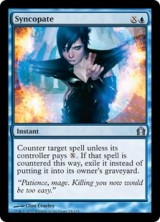 Ultimately, Coldhearted Counterburn works best when you know what your opponents are playing and you can shut down their threats long enough to drain their souls of life. With a fairly predictable, boring metagame right now, jumping into the fray with this kind of control should produce interesting results.
Ultimately, Coldhearted Counterburn works best when you know what your opponents are playing and you can shut down their threats long enough to drain their souls of life. With a fairly predictable, boring metagame right now, jumping into the fray with this kind of control should produce interesting results.
Because after enough rounds of you saying “actually, in response…” it’s guaranteed your foe will detest you. The very act of casting a card will fill them with Pavlovian anxiety.
If that’s not reason enough to play this deck, I don’t know what is.

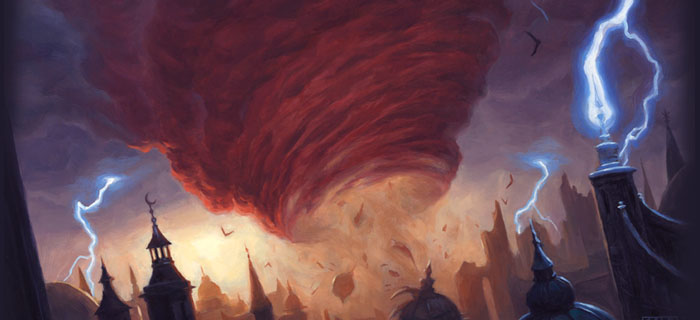
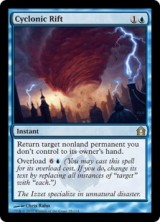
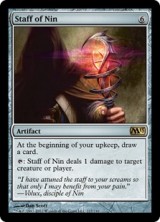
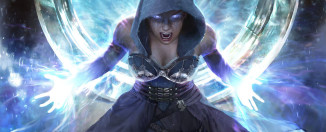
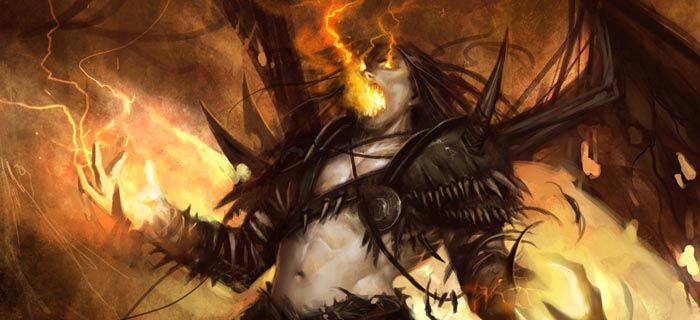



Aww I don’t have the dosh for delvers ;;
Ops just mixed up Delver with Snapcaster mage, disregard my post :<
Yep, I had the same thought at first. :)
Dear Mr. Spatt
I really like your approach, I have always been a dark purple player at heart. I feel like you specifically would benefit from adding black to your deck, particularly search and some fat ass demon/evil whatever else creatures. I have watched the way you play from when you first started putting duels videos on youtube and I really think you could benefit from adding black.
Love,
Woolly
What would you suggest putting in and removing from his list?
I don’t know if I would adjust this deck specifically, I think it is a great build and reminds me alot of what used to make me HATE Izzet. I think he could just use somemore black in his life…in every facet…including booty. Just sayin.
Woops, I mean’t “Mr.Spantt”.
what about Devil’s Play? that’s one of my favorite counter-burn game winners. late game insta-death.
plus flashback.
Really cool deck, Wingspan.
I really wish we could make decks like these in Duels cause Magic Online is just not my thing.
Hey Wing, I’ve been playing Duels for years now and I have recently gotten into paper magic. I’ve noticed you have much less land than what I am used to seeing in Duels. I was wondering if you would write an article about how much land should go into a deck and other important ratios that should be brought to the attention of beginners.
SimpleFall, I’m glad you asked that!
It turns out Destricted has written part 2 of his “From Duels to paper Magic” series, and a part of it is about mana ratios. It will be live Monday morning and should answer this very question.
In GENERAL though, decks should run 20-25 lands, with 23 or 24 being safe for most midrange decks and less than that for super fast aggro decks.
Awesome! Thank you very much. I am a big fan of your work and I have learn much from watching. Keep it up!
wing, you play competitive or casual? I play casual with my mates but everytime we play multiplayer he pulls out this sacrifice deck with an infinite combo, which is literally impossible to beat.
Have you got any ideas? I’ve tried making a UR instant/sorcery deck with no creatures, which rarely beats him…
I play both but I need to know more to help you. What’s the combo? Is it standard, modern, legacy, or totally casual? What’s the win condition?
Cool deck, trying it out.
I would point out that Evolving wilds’ thinning effect is NOT minuscule. It’s small, sure, but definitely non-negligible.
If you want proof of this, try playing the goblin deck in Duels with 61 cards and then with 60 cards. That one card swing in odds is quite detectable after a dozen games or so, as you draw many times per game after the initial 7.
Evolving Wilds is higher in effect than this, since you will rarely run a standard deck at 61 cards.
Shouldn’t Snapcaster Mage be in this deck?
It’s still legal and fun.
any chance of an updated article with newer sets? I love this but most of these wont be standard soon.